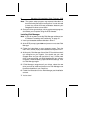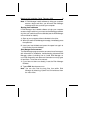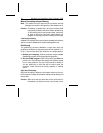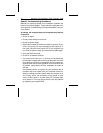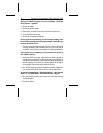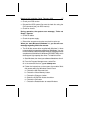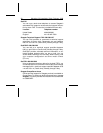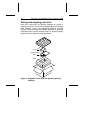
During the FDISK program, the error message, “No Fixed
Disk Present,” appears.
• Check all cables.
• Check the power supply.
• Reboot the computer and make sure the drive spins up.
• Verify the BIOS drive type.
• Check for I/O address conflicts.
During high-level formatting, the drive keeps finding hard
errors and reporting the following message: “Attempting to
recover allocation units. . .”
• This is normal with some versions of DOS. The drive will format
normally. However, after formatting the drive, you may want to
run a third-party surface-scan program to check for bad sectors.
During high-level formatting, the drive does not format to
full usable capacity.
• Verify the BIOS drive type. Your drive’s formatted capacity is
limited to the capacity of the BIOS geometry you selected. If
your BIOS does not offer a geometry that takes advantage of
the full capacity of the drive, and a user-defined drive type is
not available, use a third-party partitioning utility.
• Run FDISK again and make the partitions smaller. Make sure
you are using MS-DOS Version 5.0 or later or equivalent.
At startup, the messages, “Disk Boot Failure,” “Non-System
Disk,” or “No ROM Basic - SYSTEM HALTED,” appear.
• Run the FDISK program and make sure the primary partition
is marked active.
• Check all cables.
16 Marathon 810 Installation Guide, February 1996



